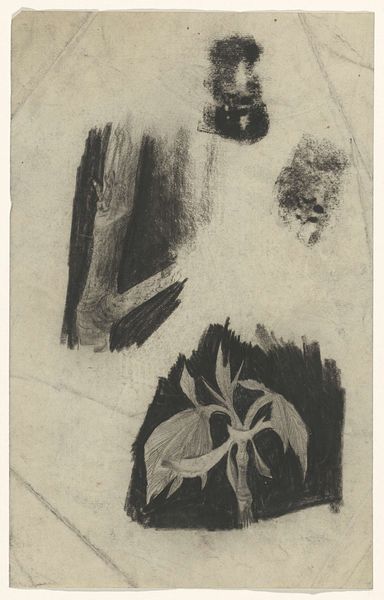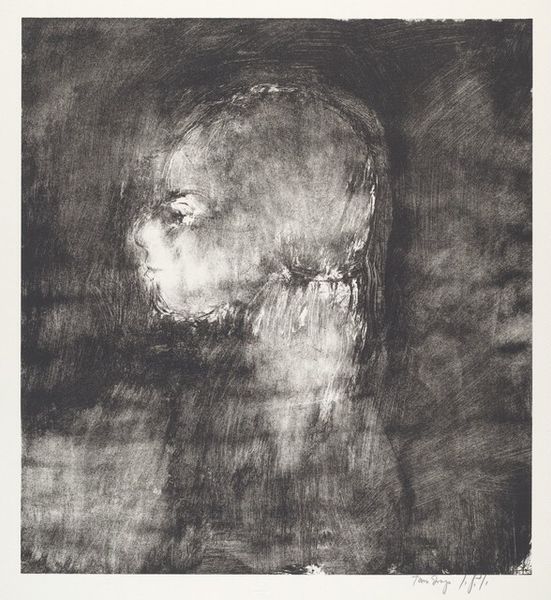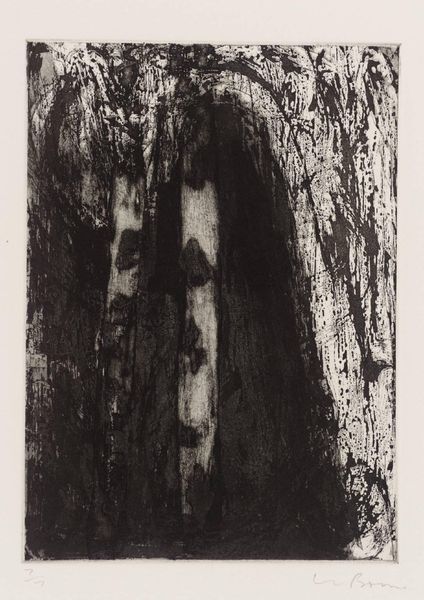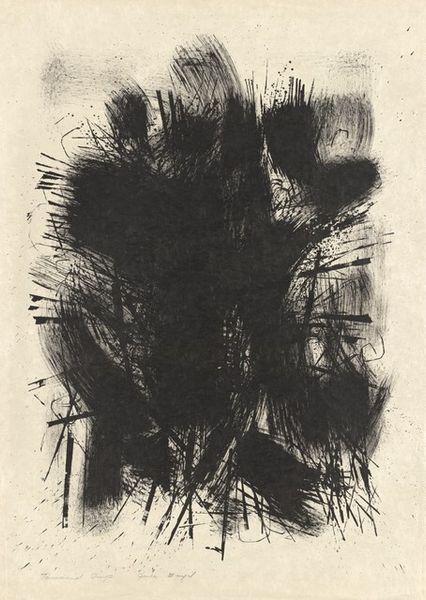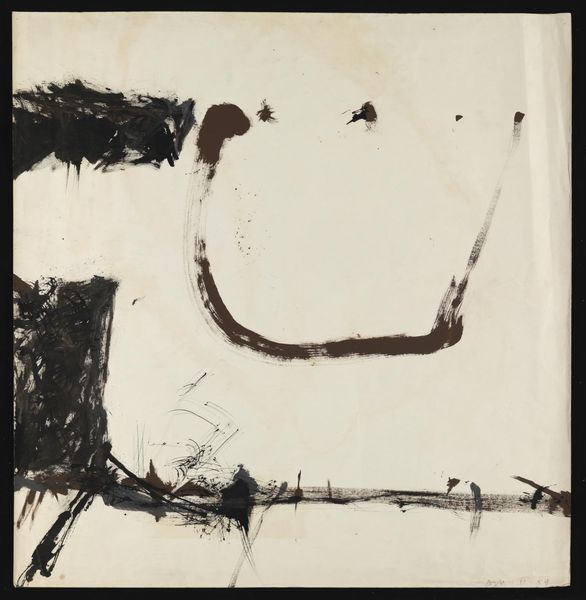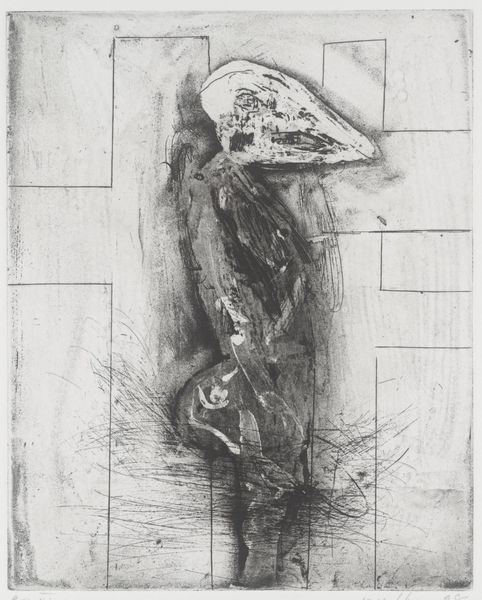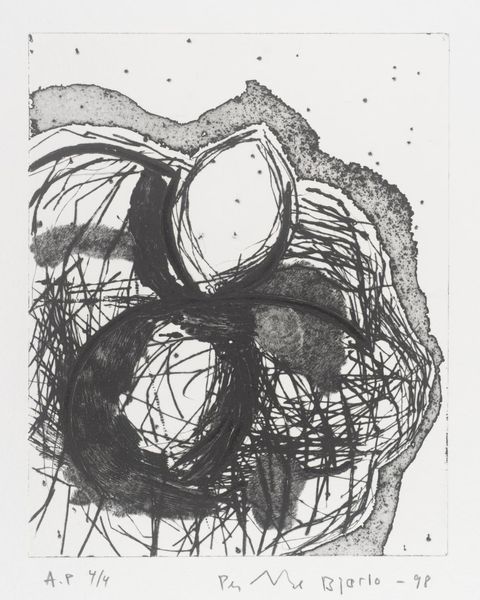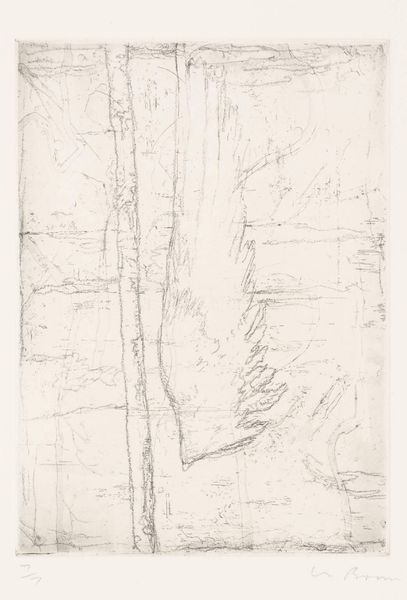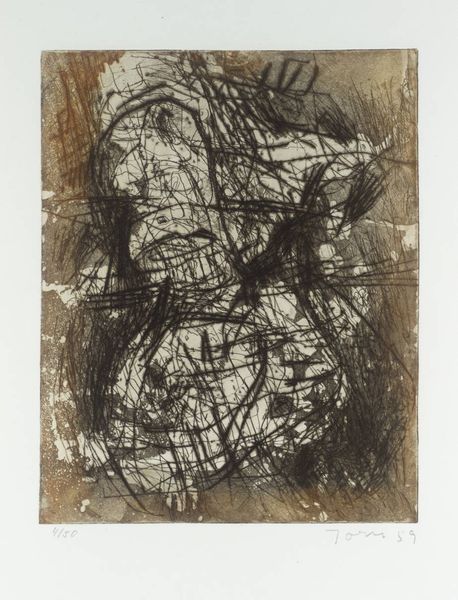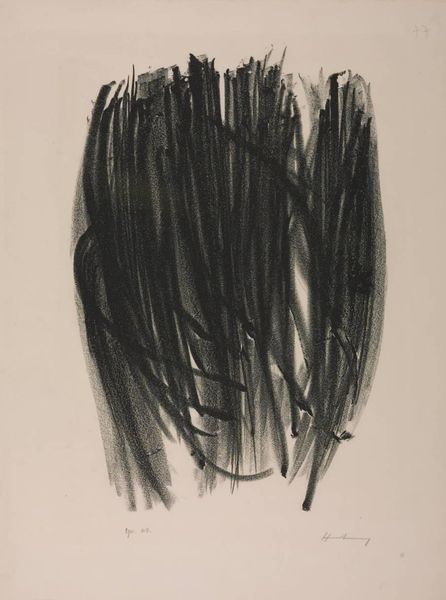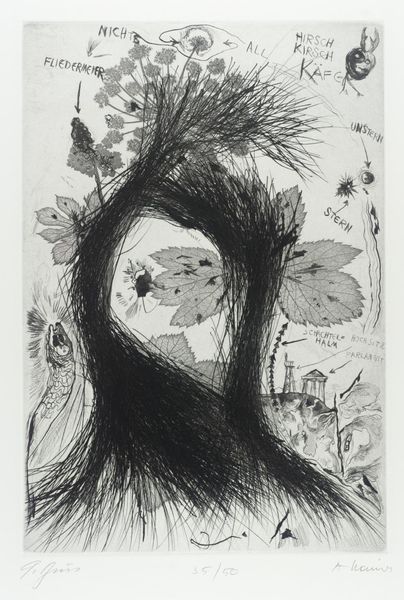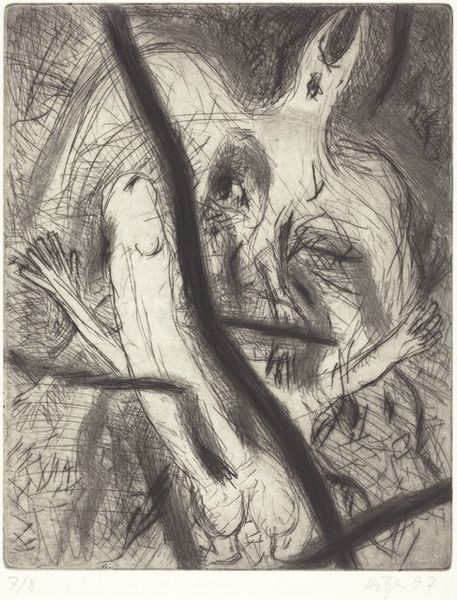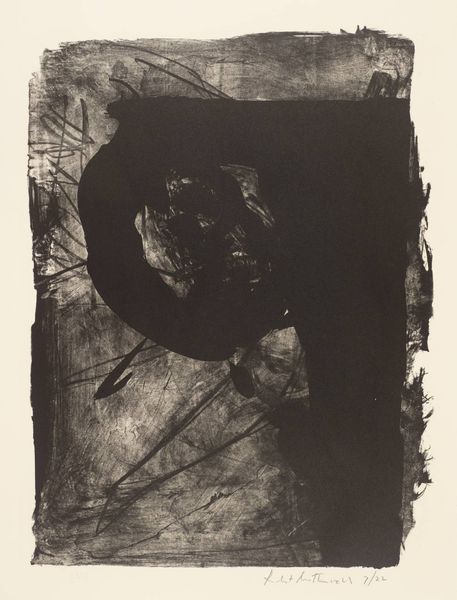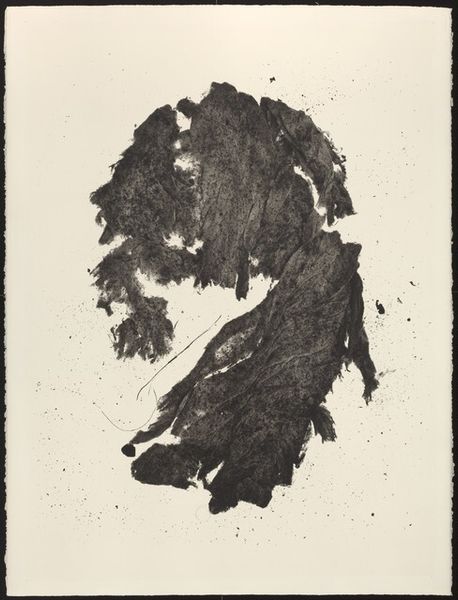
drawing, print, graphite
#
drawing
# print
#
landscape
#
pencil drawing
#
geometric
#
graphite
Copyright: National Gallery of Art: CC0 1.0
Jay Moon created this print, Autumn Haiku, sometime between 1950 and 1990, using etching on paper. As an etcher, Moon would have started with a metal plate, likely copper or zinc, coating it with a waxy, acid-resistant ground. Then, using a sharp needle, he would have drawn this composition, exposing the metal beneath. The plate would then be immersed in acid, which bites into the exposed lines, creating grooves. After removing the ground, the plate is inked, and the surface wiped clean, leaving ink only in the etched lines. Finally, the plate and paper are pressed together, transferring the image. This print is an early state proof. Here, Moon captures the stark beauty of a tree, its branches like veins against the sky. The materials and method are direct: the drawing translated through acid, metal, ink, and paper. By embracing this laborious process, and the inherent qualities of the materials, Moon elevates a simple observation into something deeply resonant. This challenges the traditional hierarchy between printmaking and painting, craft and art.
Comments
No comments
Be the first to comment and join the conversation on the ultimate creative platform.
